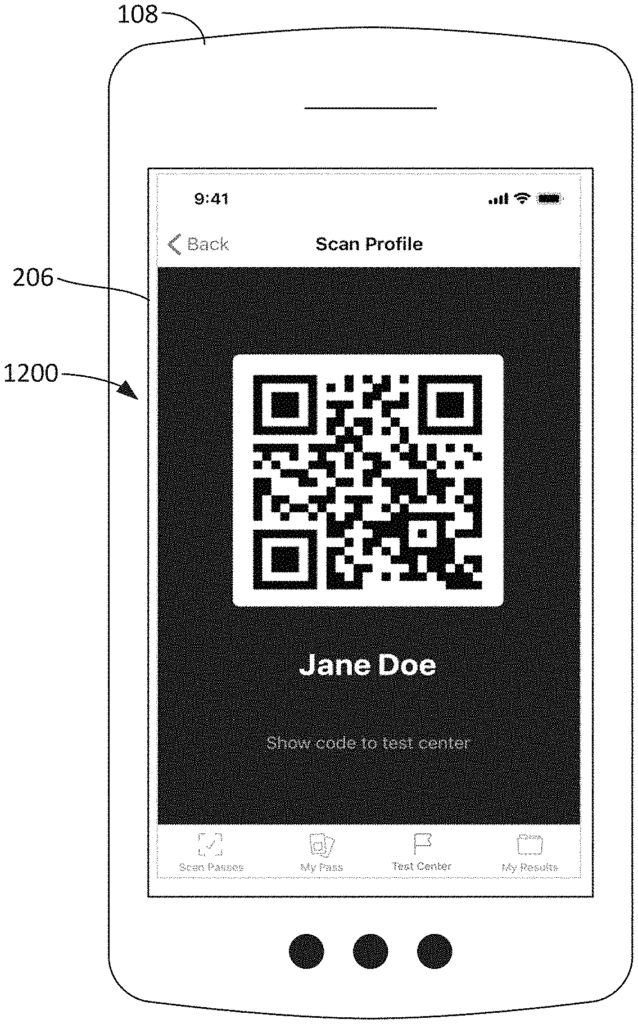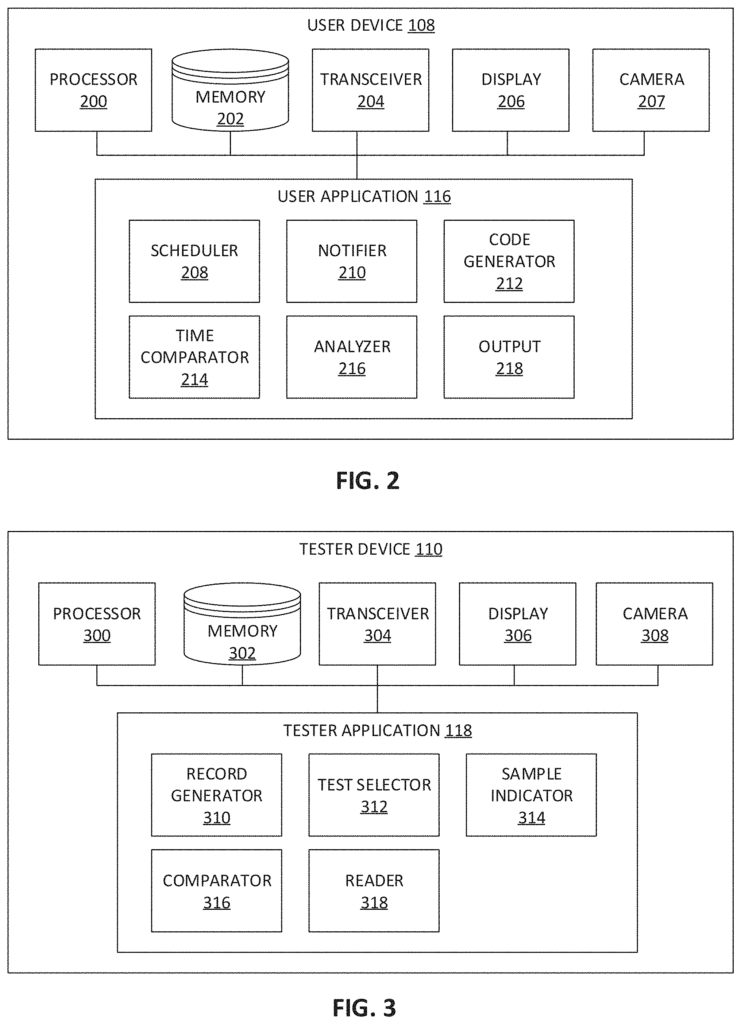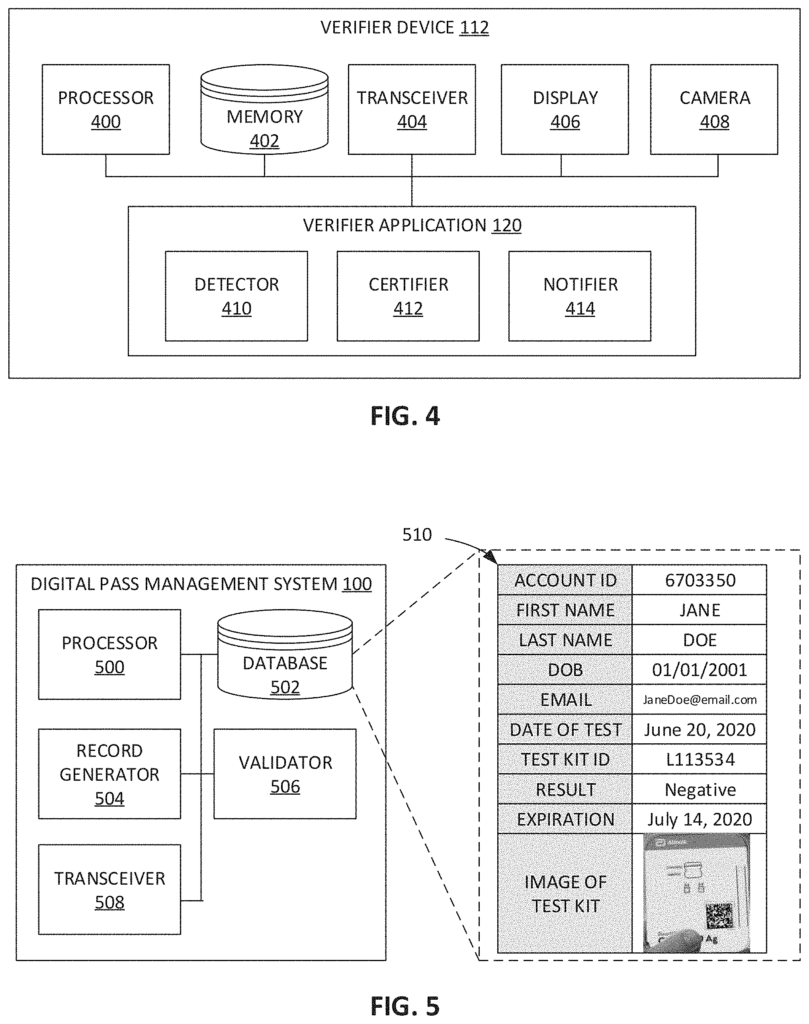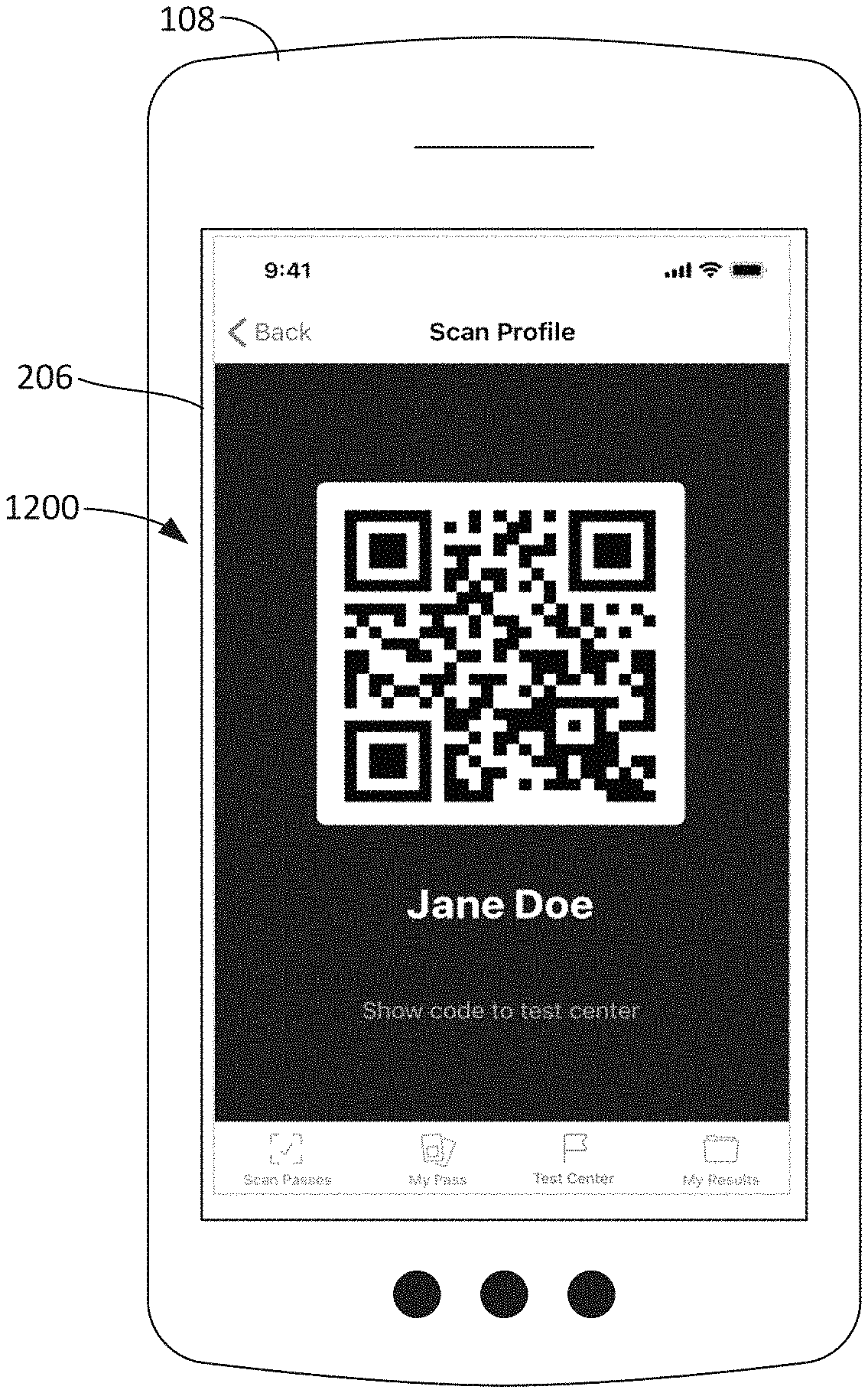Invented by Nitesh Luthra, Lev F. Frayman, Terry Finch, John Schullian, Douglas Wager, Nicholas Alexander Robertson Wood, Abbott Laboratories
Digital pass verification systems, also known as digital ID verification systems, are designed to authenticate the identity of individuals using digital credentials. These credentials can include biometric data, such as fingerprints or facial recognition, as well as traditional identification documents like passports or driver’s licenses. By utilizing advanced technologies, these systems ensure that only authorized individuals can access certain services or facilities.
One of the key drivers behind the growing market for digital pass verification systems is the increasing concern for security and fraud prevention. Traditional methods of identification, such as physical ID cards or passwords, are susceptible to theft or forgery. Digital pass verification systems, on the other hand, provide a higher level of security by incorporating multiple layers of authentication. This significantly reduces the risk of identity theft and unauthorized access.
Furthermore, the convenience and efficiency offered by digital pass verification systems have also contributed to their market growth. With these systems, individuals no longer need to carry multiple physical identification documents or remember complex passwords. Instead, they can simply use their digital credentials, which can be securely stored on their smartphones or other devices. This not only saves time but also improves the overall user experience.
The market for digital pass verification systems is not limited to any specific industry. It has found applications in various sectors, including banking and finance, healthcare, transportation, and government services. For example, banks are using these systems to verify the identity of customers during online transactions, while hospitals are implementing them to ensure the privacy and security of patient information.
In terms of methods and techniques, the market for digital pass verification systems is constantly evolving. Advancements in biometric technologies, such as improved facial recognition algorithms or voice recognition systems, are making these systems even more accurate and reliable. Additionally, the integration of artificial intelligence and machine learning algorithms is enabling these systems to continuously learn and adapt to new threats or fraudulent activities.
The market for digital pass verification systems is expected to continue its growth trajectory in the coming years. As businesses and organizations increasingly prioritize security and efficiency, the demand for these systems will only increase. Moreover, the ongoing advancements in technology will further enhance the capabilities of these systems, making them an indispensable tool for secure identification and access control.
In conclusion, the market for digital pass verification systems, methods, and techniques is witnessing rapid growth due to the increasing need for secure and efficient identification processes. These systems provide enhanced security, convenience, and efficiency, making them an attractive solution for businesses and organizations across various industries. With ongoing advancements in technology, the market for digital pass verification systems is poised for further expansion in the future.

The Abbott Laboratories invention works as follows
The present invention discloses digital pass verification methods and systems. On a network, one or more servers will distribute instructions. When executed, the instructions cause a device that is carried by an individual to: access the results of a diagnostic test conducted on them, provided by a secondary device; generate a code readable by machines if the result is negative; and display this code readable by machines on a display on the first device in order to allow the individual to access a specific location.

Background for Digital pass verification systems, methods and techniques
In recent years there have been an increase in infectious diseases (e.g. viral diseases, bacteria diseases, etc.). COVID-19, Ebola, H1N1pdm09, Middle East Respiratory Syndrome Coronavirus (MERS CoV), and Severe Acute Respiratory Syndrome are just a few examples. These infectious diseases can be easily spread from person to person in close proximity, or indirectly via surfaces and objects. Many entities (e.g. companies, schools and retailers, government, facility managers etc.) are working to curb the spread infectious diseases. “Restrict people with infectious disease symptoms from entering their facilities or locations.
Disclosed herein are examples of apparatus, systems and methods as well as articles that allow entities or persons (referred to herein by the term verifiers) to verify if a person recently tested negative for a disease. Before granting a person access to an area or location, the verifier can verify that they have recently tested negative for an infectious disease (e.g., a pathogen virus). Verifiers can maintain a healthy environment in a particular area by reducing the risk of infection. Verifiers can include, for example, airlines, offices and malls. They could also be libraries, sporting venues, schools, theatres or retailers. Many of the examples described herein relate to testing for pathogens and viruses as well as other infectious diseases. “However, it is understood by all that the examples described herein can be used in connection with any analyte or interest.
In the examples provided here, a person (referred to as a “user”) may be tested for an infectious disease. If the test results are negative, then a digital card (which can also be called a digital card, electronic card, health card, digital health card or health card) will be generated and stored on an electronic device of the user, such as his/her smartwatch, smartphone, etc. In some cases, the digital pass contains a code. This code can be a Data Matrix Code (DMC), a QR code, a Bar Code or any other machine-readable code. In some cases, the digital pass code contains a user ID (e.g. a user account number) and an identification of a kit that was used to test the individual. Other information can be included in the digital pass code. The digital pass code on the electronic device of the user can be scanned by a verifyor when the user arrives at the verifier location to confirm that the user was tested and that the test resulted in a negative (i.e. the user is not contaminated with the pathogen). Verifiers can scan digital passes using a verifier, such as a smartphone or handheld scanner. In some cases, the scanner can be a camera. In some cases, the test results of users are stored in a digital management system. The digital pass management system allows the verifier to verify the identity of the test taker and the result. The digital pass code allows the verifiers to quickly and accurately gather identifying information on the user. This can be used to confirm if the user was recently tested or if the result of the test was negative. Verifiers can grant access to the location if the digital pass code is valid. If the user doesn’t have a valid digital pass or if it is expired or invalid, the verifier may deny access to the location.
In some cases, the tester is a medical professional (e.g. a nurse or doctor). Testing facilities (e.g. a hospital, doctor’s office, medical clinic, etc.) are used. In some cases, the electronic device of the user generates an identity code that can be used to identify them. The tester can scan an identity code with a tester’s electronic device (e.g. a tablet, smartphone or other tester-owned electronic devices) to create the record of the user with the digital pass system. The test results are saved with the user record in the digital management system.
In some examples, the user device, the tester device and the verifier device operate an application which allows the devices and the people to interact with the digital access management system. The digital pass system stores information such as account information, test result, etc. The digital pass system is an interface that connects the various entities.
In some cases, the verifier can be a workplace who wants to ensure their employees’ safety. The verifier can require employees to have a digital pass valid every time they enter the workplace. In some cases, the digital pass will expire after a specified period (e.g. 5 days, 7 or 10 days). The employees may have to be tested more than once or on a regular schedule.
The examples provided here benefit all parties: employees, employers (the verifyors), and testers. The examples herein allow employees to return safely to work. This could be more productive and effective than working remotely, or it could be their only option if they are unable to perform their duties remotely. It also encourages employees by keeping them aware of their own health and the risks they pose to others. The examples provided herein, from the employer’s perspective, can be used to reinforce employee safety in the workplace. They can also be used to manage employee risk at the work place, to have confidence in workplace safety, to understand who has access, to verify an employee’s pass on ad hoc basis, to act locally using high frequency data and to access data which may inform workplace access policies. The examples herein allow testers to efficiently administer tests, record results, and manage throughput in a reasonable manner, while maintaining the safety of the employees waiting for testing and results. Other types of verifying organizations such as schools and malls, airlines and sports arenas can also benefit from these benefits.
FIG. “FIG. The digital pass system 100 can interface with multiple people or entities, and/or distribute software to these persons or organizations to facilitate the example verification processes of digital passes disclosed herein. The example digital management system 100, for example, can be used to generate a digital pass (e.g. a pass) for a user. A verifier then uses the digital pass to grant or deny the user access. FIG. FIG.1 shows an example of a user 102, a tester 104 and a verifier 106. In this example, a first electronic gadget 108 is used by the user 102, a second device 110 is used by the tester 104, and a third device 112 is used by the verifier 106. Although only one tester and verifier is shown, it should be understood that the digital pass management example system 100 can accommodate multiple users, testers, or verifiers (e.g. hundreds, thousands, or millions). “There are many users (e.g., hundreds, thousands, millions) of testers and/or users.
The verifier 106 is any person or entity who wants to verify the health status of an individual (e.g. user 102) prior to granting physical access. The health status can include information about a person’s overall health, such as a positive or a negative result of a diagnostic test to detect an infectious disease. Verifier 106 can be an airline or other business, such as a library, mall, school, office, government, park rangers, etc. Verifier 106 can be, for example, an airline gate agent that checks the tickets and digital pass of the user before boarding the plane. Verifier 106 can also be a security officer or another person that checks the pass before the user enters an office. Verifier 106 checks the health status of user 102 using the verifier device 112. This is described in more detail below. Verifier device 112 can be a mobile electronic gadget, such as a tablet computer, smartphone, laptop, handheld code scanner or the like. Verifier device 112 may also be implemented in a non mobile electronic device such as a desktop or kiosk computer, an internet-connected device that is not mobile, or a device that can scan a barcode.
The user 102 may represent any individual who wishes to gain access to the location controlled by the verifier. The user 102 may interact with the device 108 in order to create a digital account, view and receive results of a test, or display a pass. The user device is an electronic device carried by the user. In this example, a smartphone is the user device. In other examples, however, the user device can be implemented using any type of mobile electronic device or non-mobile device, including a tablet computer, smartwatch, laptop computer, desktop computer, etc.

The tester 104 could be a nurse or doctor, testing facility, hospital, clinic, etc. This device tests a sample taken from the user/person to test for an infectious illness (e.g. a disease caused a virus or bacteria). As described in more detail below, the tester 104 interacts with the tester 110 to pair the user 102 up with a test kit, enter results, etc. In this example the tester device is a tablet. In other examples, however, the tester device can be implemented using any mobile or non-mobile device, such a smartphone.
The digital card management system 100, user device 108 and tester device 110 communicate via network 114 such as the Internet. In some cases, the tester 110 and verifier 112 each download an application that allows the digital pass system 100 to communicate with the user devices 108 and 110. Applications may be tailored to the type or entity. As shown in FIG. The user device 108 contains a user application, the tester device includes a tester app, and the verification device includes a validation application. In some cases, applications can be downloaded to the devices directly from the digital passes management system 100, or another entity such as the Apple App Store, or Google Play Store. The example application described herein may be used with different operating systems. The digital pass system 100, user device 108 and tester device 110 and verifier device 112 can communicate and view the information provided in the application.
While the examples of operations described herein relate to the functions performed on a specific device, the operations are not restricted to the functions performed by an app downloaded onto the device. The operations can also be performed using a web browser, or web-based application. In some examples, the operation can be displayed remotely on the devices by a digital pass management system, for example. In some examples, operations of applications disclosed herein can be cloud-based, partially cloud-based, or edge-based.
FIG. The example tester device 110 is shown in FIG. In some examples, tester device 110 can be implemented by mobile electronic devices such as smartphones, laptop computers, tablets, etc. Other examples include a desktop or medical device, server, server-based computer, etc. The tester device includes an example processor 302, an instance memory 302, and an instance transceiver. The tester device 110 includes, in this example, a camera 308 as well. As described in more detail below, the camera 308 may be used to scan QR codes or take photos. The camera 308 may be a part of the tester 110 (e.g. a built-in camera in a smartphone), or it can be communicatively connected to the tester 110 (e.g. a handheld scanner communicating wirelessly with the tester 110). The tester application can be stored on the memory 302 by the processor 300 and then executed. The tester application includes an example record generation 310, an instance test selector 312, a sample indicator 314, a comparator 316 and an reader 318. Below is a description of how the tester application 118 operates.
FIG. 4 is a block diagram of the example verifier device 112. In some examples, the verifier device 112 is implemented by a mobile electronic device, such as a smartphone, a laptop computer, tablet, etc. In other examples, the verifier device 112 can be implemented by a scanner such as, for example, a handheld code scanner. In other examples, the user device 108 can be implemented as any other type of mobile or non-mobile electronic device. The verifier device 112 includes an example processor 400, an example memory 402, an example transceiver 404, an example display 406, and an example camera 408. The camera 408 can be part of the verifier device 112 (e.g., a camera built into a smartphone) or communicatively coupled to the verifier device 112 (e.g., a mounted or a handheld scanner in wireless communication with the verifier device 112). The verifier application 120 can be stored in the memory 402 and executed by the processor 404. The verifier application 120 includes an example detector 410, an example certifier 412, and an example notifier 414. Operation of the verifier application 120 is disclosed in further detail below.
FIG. The block diagram for the digital pass system 100 is shown in Figure 5. In some cases, the digital management system 100 acts as an application server to support the applications that are executed on other devices. Digital pass management system 100 comprises an example processor 500 as well as an example database 502, example record generator 504, example validator 506, example transceiver 508 and an instance transceiver 508 In addition to storing information about users, tests, etc. and/or records created by the record generator 504, as described in detail below, the database 502 may also store information about other entities. In some cases, the digital passes management system 100 may be owned, controlled and/or operated by the verifying entity. If the verifier entity was an airline, then the digital pass system 100 could be controlled by that airline. The digital pass management 100 can also be controlled by an office if it is the verifier entity. The digital pass management 100 may be operated or controlled by the testing entity in other examples. The digital pass management 100, for example, can be provided to a medical facility or hospital. In some cases, the digital management system 100 may be operated by an entity that is not connected to either the verifier or testing entity. The digital pass system 100, for example, could be owned and operated by a company or entity that licenses applications from the digital system to various verifier organizations, such as airlines, schools, offices etc. In certain examples, verifier organizations could have access to and/or control over certain data or reporting (e.g. tester identities, test results). The company that owns the digital pass system 100 could be responsible for the operation of the backend datasets, and the environments in which it operates.
The digital pass management system may allow separate accounts for the verifier organizations. Verifier organizations can access account information via an application (e.g. on a computer or other device) to edit, add, delete, etc. Users or user profiles can be modified, as well as various parameters. Associated with the digital pass system for each verifier organization. Verifier organizations can also sync digital passes with employee records to deactivate digital passes for employees who have left their employment. Verifier organizations can be run by one or several designated personnel from the verifier organisation (e.g. a HR staff member).
In some cases, the digital passes management system 100 allows the verifying organization to view a list of participants and the associated information they contain (e.g. IDs, digital pass statuses or the status of creating a new account). Reports can be generated (e.g. a report that shows people who are eligible to work). The verifier organization, for example, can create reports that show users who tested negative, positive, or invalid. They can also filter the results by dates and ranges. The verifier organisation can, in some cases, send reports to a state or federal government agency, a business, another verifier group, and/or other entities (e.g. a parent teacher association). In some cases, the verifier organisation manually creates and sends the reports (e.g. via email). In some examples, the digital passes management system 100 generates and automatically sends reports (e.g. once a week or once a monthly). In some cases, the generation or sending of the reports could be triggered by a specific event (e.g. a request made by the CDC). In some examples the digital pass system 100 receives user identifications, test kit IDs, and results from diagnostic tests. It then generates reports based on these results, and sends them to government agencies.
In some cases, the digital pass system 100 will send invites to users who want to join the verifier organisation. A verifier organisation (a place of work) could create an account for the verifier organization and invite all its employees (users), to create accounts through the user application (116). New hires can also receive invitations. Invites can be sent by email or text message, for instance. Invites can include a token code or unique link to link/associate a user’s account to the verification organization account. A user can also search for specific verifier organizations using the user application 116, and then link his/her account to the account of the verification organization. In some cases, one or several users can be given administrative control over the account information of the verification organization. Verifier organizations can grant different levels of permission to users depending on their roles. The digital pass system 100 can be located remotely from the tester 104 or the verifier. “One or more operations described herein as being performed by applications can be executed partially or completely at the digital passes management system 100.
An example is given below, in relation to the interface screens shown in FIGS. 6-38. The example process is described with respect to the user 102 who was tested for COVID-19. It is understood, however, that the example procedure could be performed similarly in conjunction with assays to detect any analyte or disease of interest. This includes analytes linked with infectious diseases.

Click here to view the patent on Google Patents.

Leave a Reply